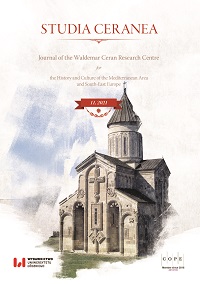Dietary Calendars in the Slavic Middle Ages: A Case Study
Dietary Calendars in the Slavic Middle Ages: A Case Study
Author(s): Irina Kuzidova-KaradzhinovaSubject(s): History, Cultural history, Middle Ages
Published by: Wydawnictwo Uniwersytetu Łódzkiego
Keywords: dietary calendars; dissemination in the Balkan Slavic manuscripts; patrons and copyist; Gavriil Urik; Gavrilo Trojičanin; Avram Dimitrievič; monks Gavriil of Mount Athos
Summary/Abstract: Thе article attempts to delineate the boundaries of dissemination of dietary calendars in the Balkan Slavic cultural area through the evidence that can be obtained from the names, places, and very rarely patrons, found in the manuscripts that contain them. Special attention is paid to the most eminent men of letters who included dieteticons in their miscellanies – the Moldavian copyist Gavriil Urik, the Serbian monks Gavriil of Mount Athos and Gavrilo Trojičanin, and the Bulgarian priest Avram Dimitrievič. The analysis of the dissemination of dietary calendars in mediaeval South Slavic and Slavic-Moldavian literatures shows that the trajectory of this marginal genre started from royal codices, ran through manuscripts commissioned by rich patrons and produced in scriptoria, and ended in the miscellanies of ordinary priests and laypersons. Whatever their hierarchical dynamics may be in Slavic literatures, they, as a whole, remain outside the context of properly medical knowledge, gravitating around miscellanies of divinatory and astrological works, erotapokriseis and apocrypha.
- Issue Year: 2021
- Issue No: 11
- Page Range: 269-282
- Page Count: 14
- Language: English

